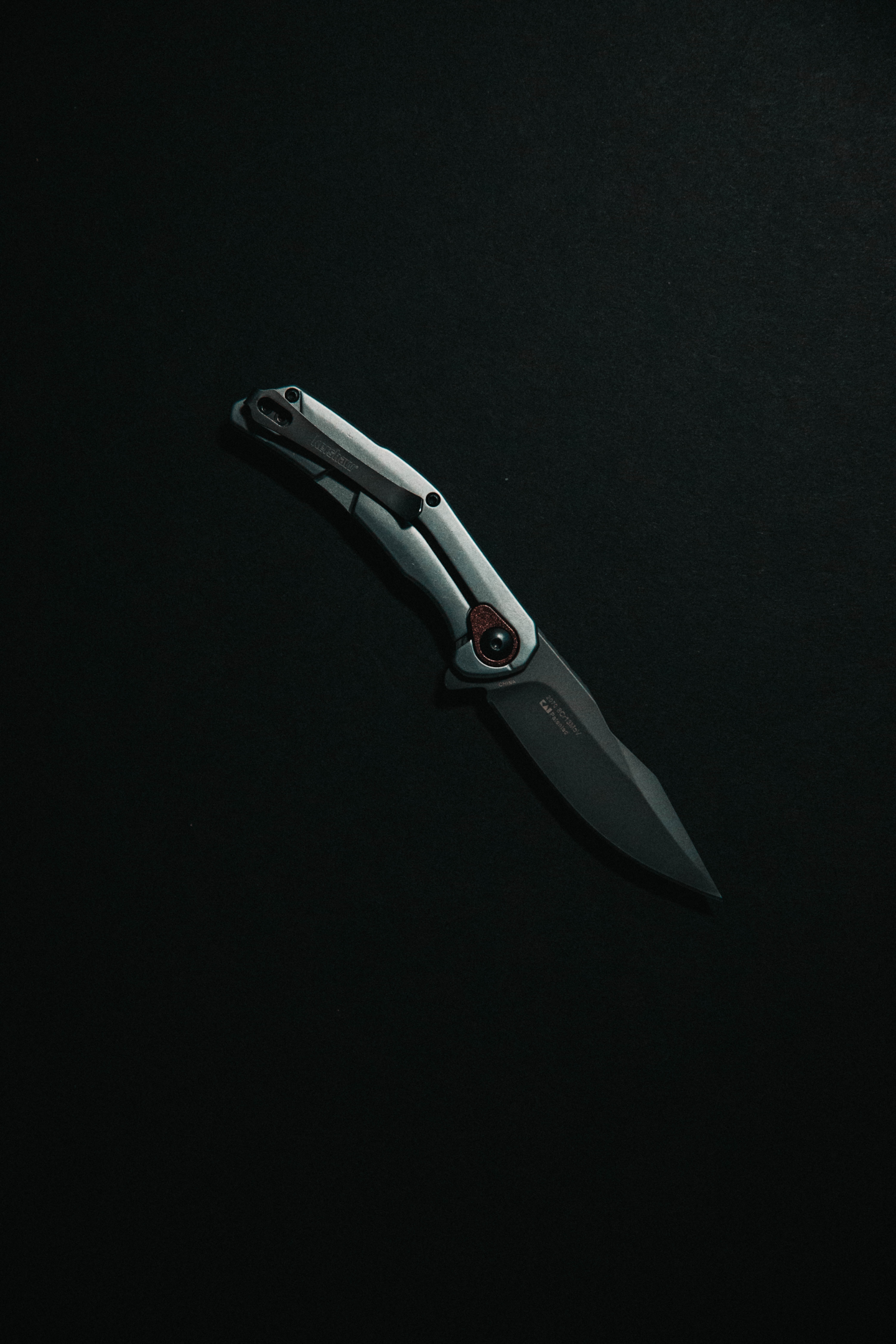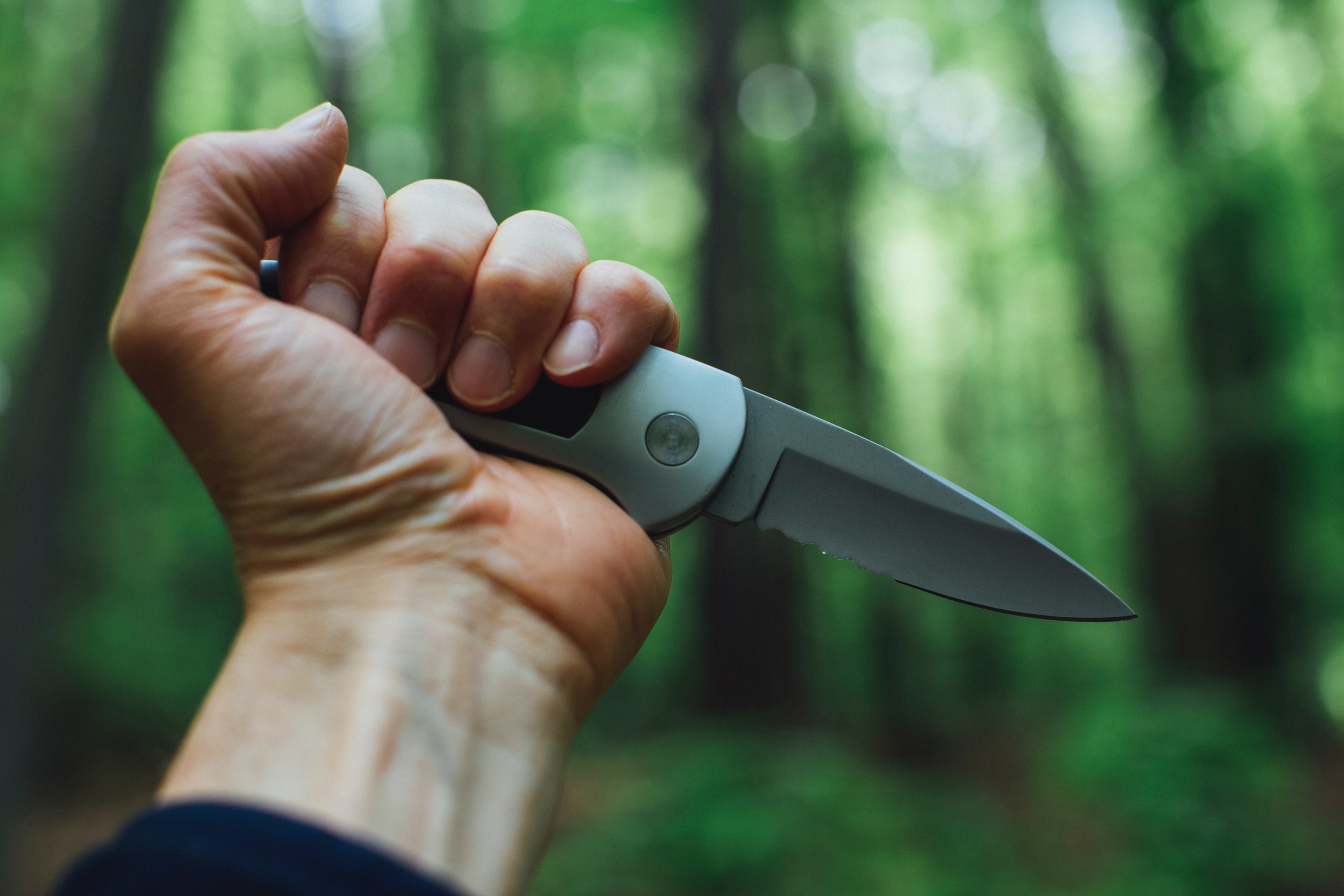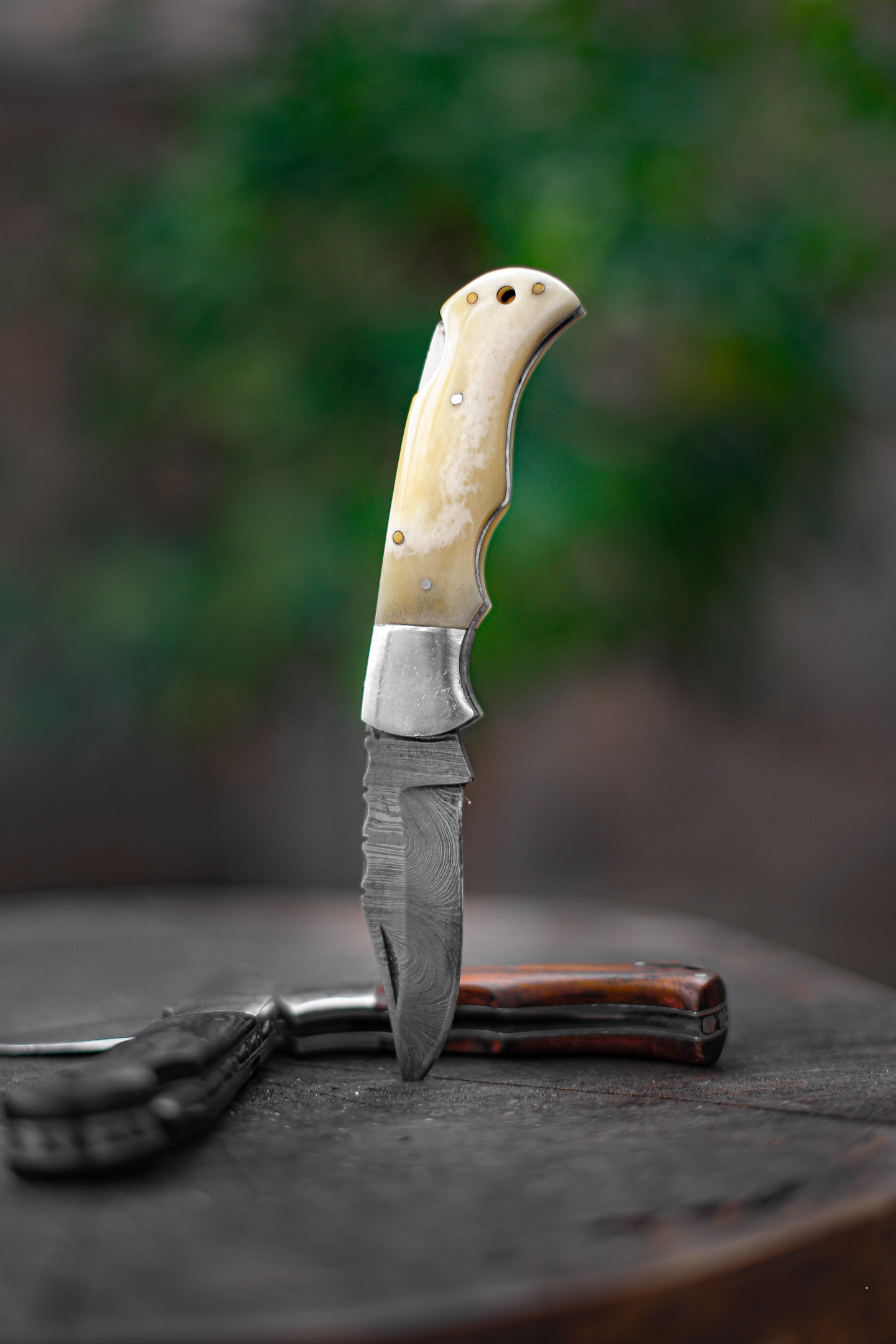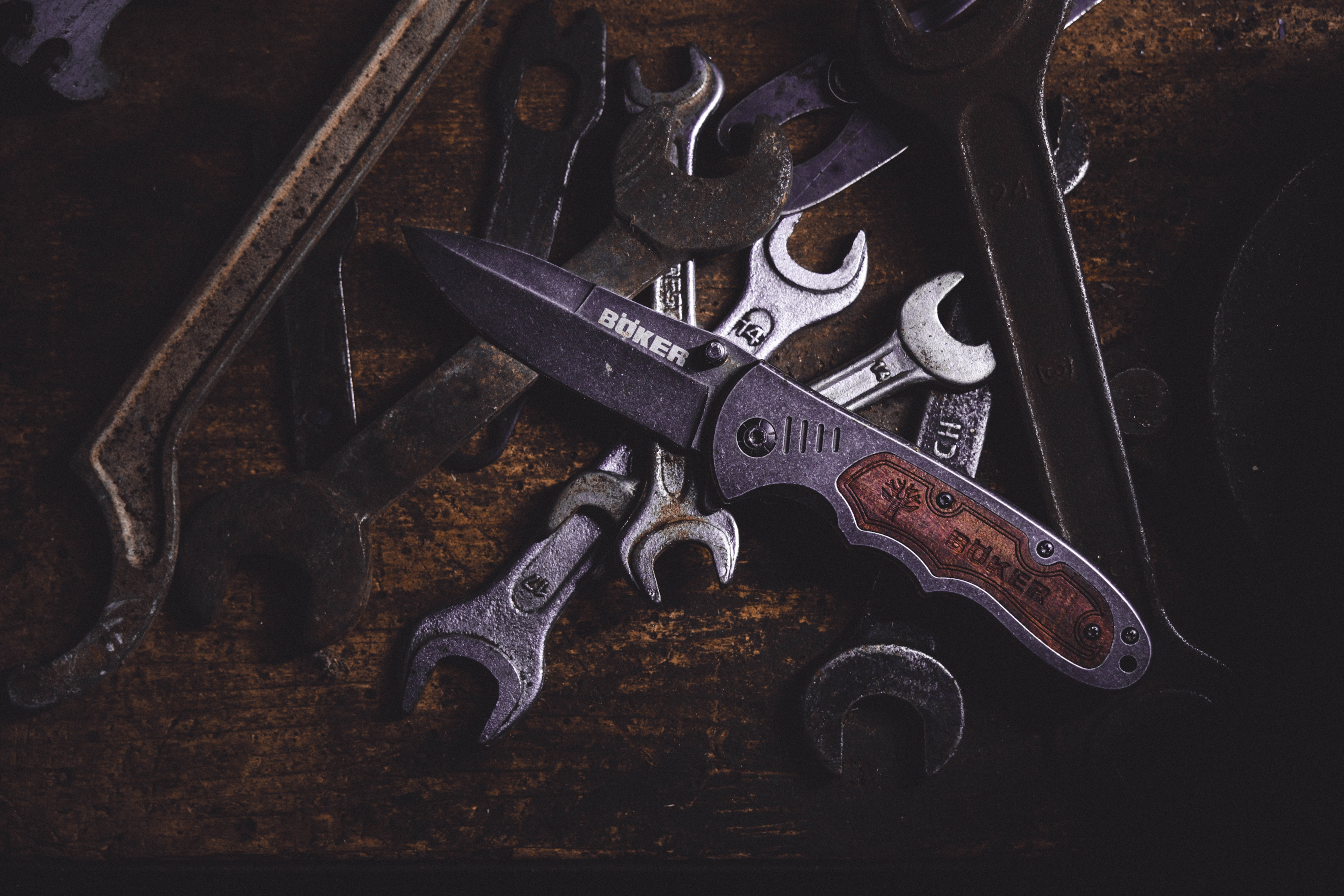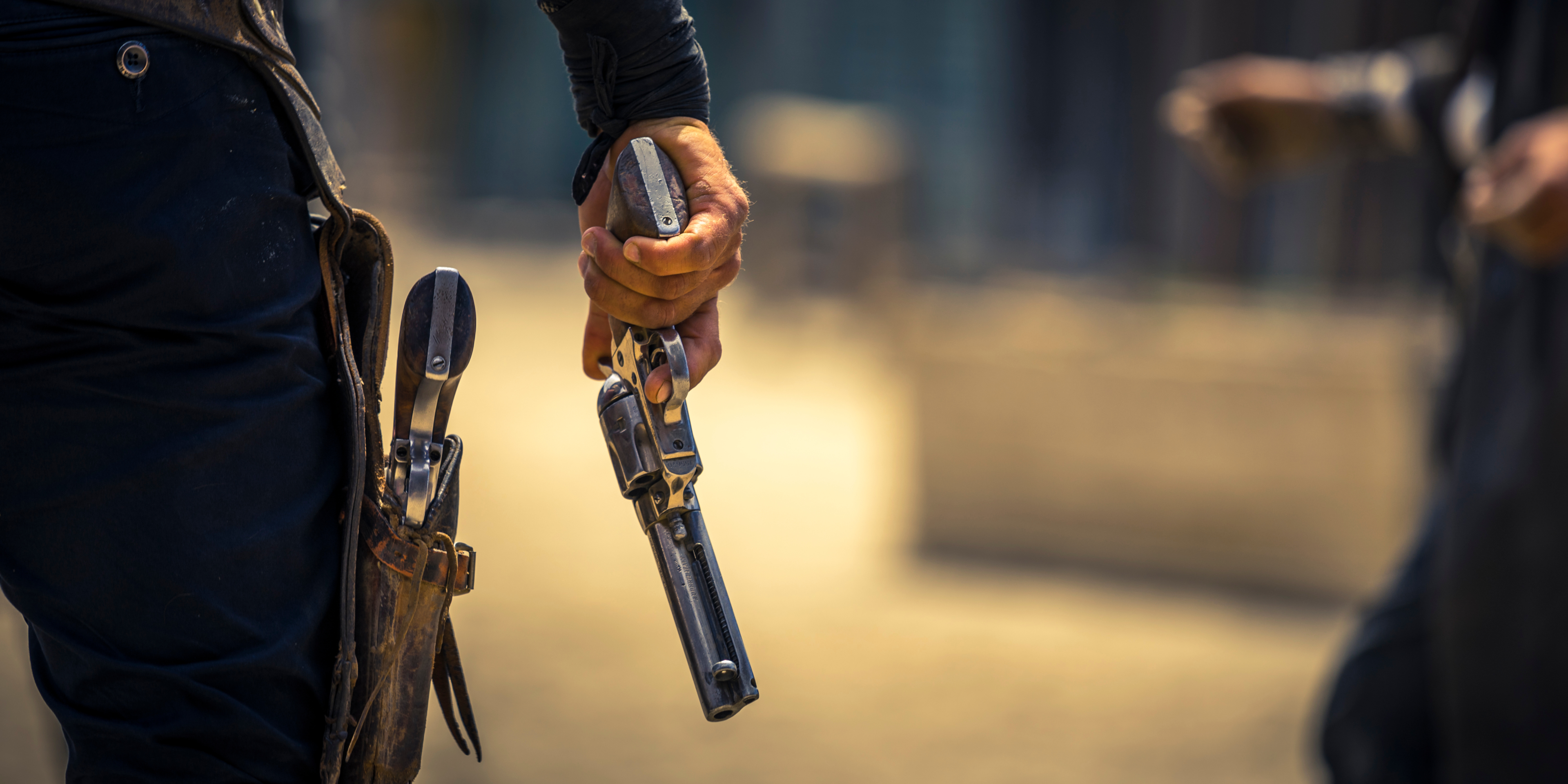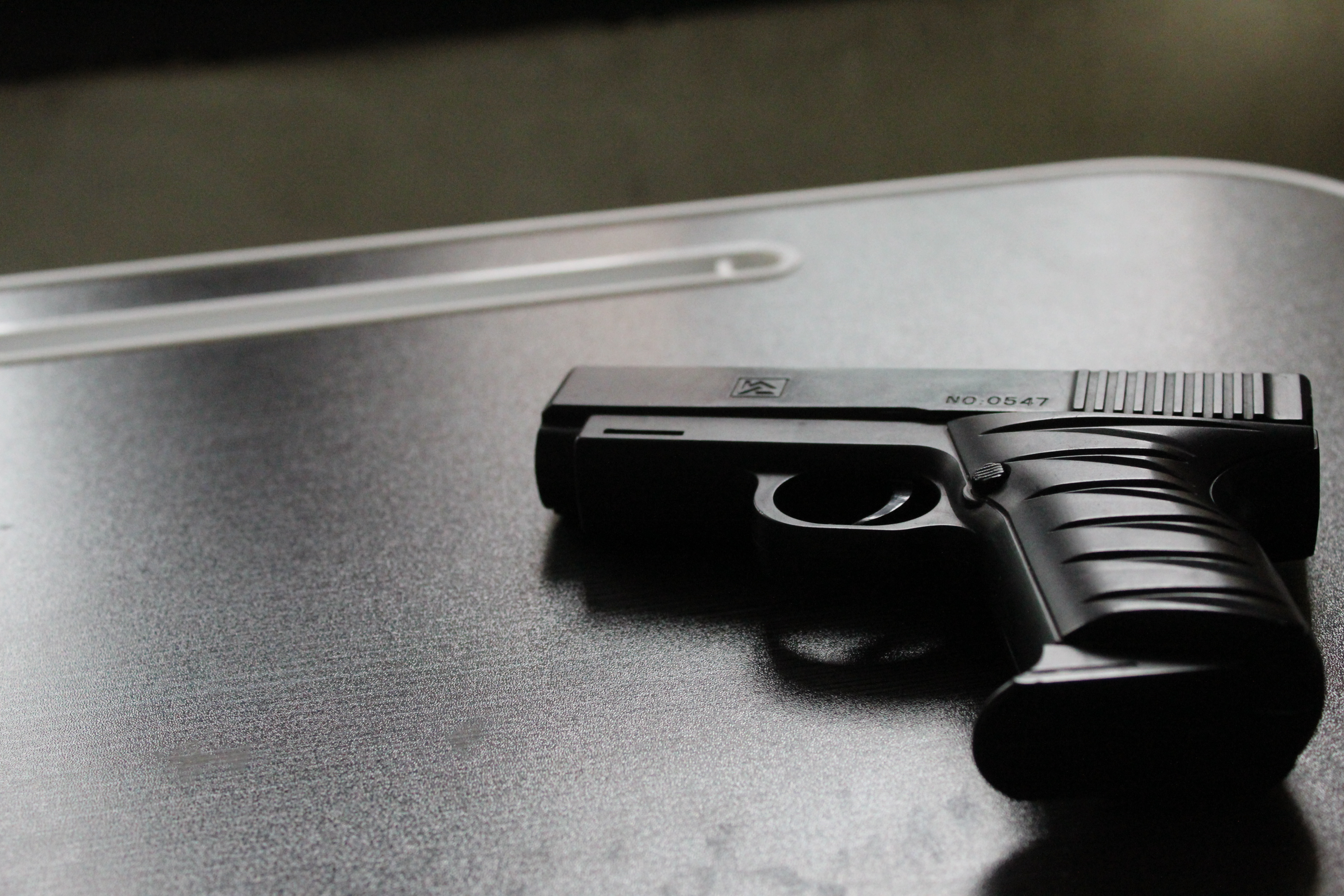Collecting knives can be an exciting hobby! If you are a passionate knife collector, just as important as finding the blades to grow your collection is keeping them in tip top shape. A well maintained and sharpened knife makes for a beautiful display piece. Knife maintenance will also keep them in working order if you happen to use them for daily tasks.
Read on as we discuss our best knife care tips to help you maintain excellent performance, the difference between sharpening and honing your knives, and the different types of sharpening stones.

Tool Talk: The Best Implements for Knife Sharpening
If your knife is simply a collectible item for display, you may not need to sharpen it very often, if at all. However, if it’s a knife that gets some use, regular sharpening is very important. A dull knife can be hazardous, as you are more likely to slip and cut yourself with a dull knife.
Honing vs Sharpening
When it comes to knives, there are actually two different practices: honing your knife, and sharpening your knife. Honing your knife doesn’t actually sharpen the knife. Rather, it recalibrates the blade back to it’s original design. The tool that comes with your kitchen knives is actually a honing device, rather than a sharpener.
How to Hone Your Knife
It’s important to hone your knife after each use, especially if it is a kitchen knife that gets regular use. To do so, start by holding the steel rod so it’s pointing away from you. Place the heel of the knife flush against the rod. Your tip will point out at a 20 degree angle. Slowly guide the knife downward, keeping the same angle. Once you’ve done this, every part of your blade should have touched the steel rod. Repeat this process about 8-10 times for both sides of the edge of the knife. Finally, wipe the knife down with a clean towel to remove any steel remnants.
How to Sharpen Your Knife
To maintain sharp knives, you don’t need to sharpen your knife blade as often as you hone it. Check whether a knife needs to be sharpened by slicing a piece of paper. A sharp knife will easily slide through the paper, and that means it doesn’t not need to be sharpened.
You can keep your knives sharp at home or you can have a pro sharpen your knife professionally. If you choose to keep your blades sharp at home, you can purchase a sharpening stone for the purpose.
Apply the right pressure: When sharpening at home, remember to apply more pressure on the knife than you think you need to use. To test the amount of pressure you are applying, press down on a kitchen scale until it says 4-6 pounds. That is the amount of pressure you should be applying.
Sharpen at the correct angle: Also, keep in mind that you need to sharpen your the blade of your knife at the correct angle. Depending on the knife, that will be 10 or 20 degrees for each side of the blade edge.
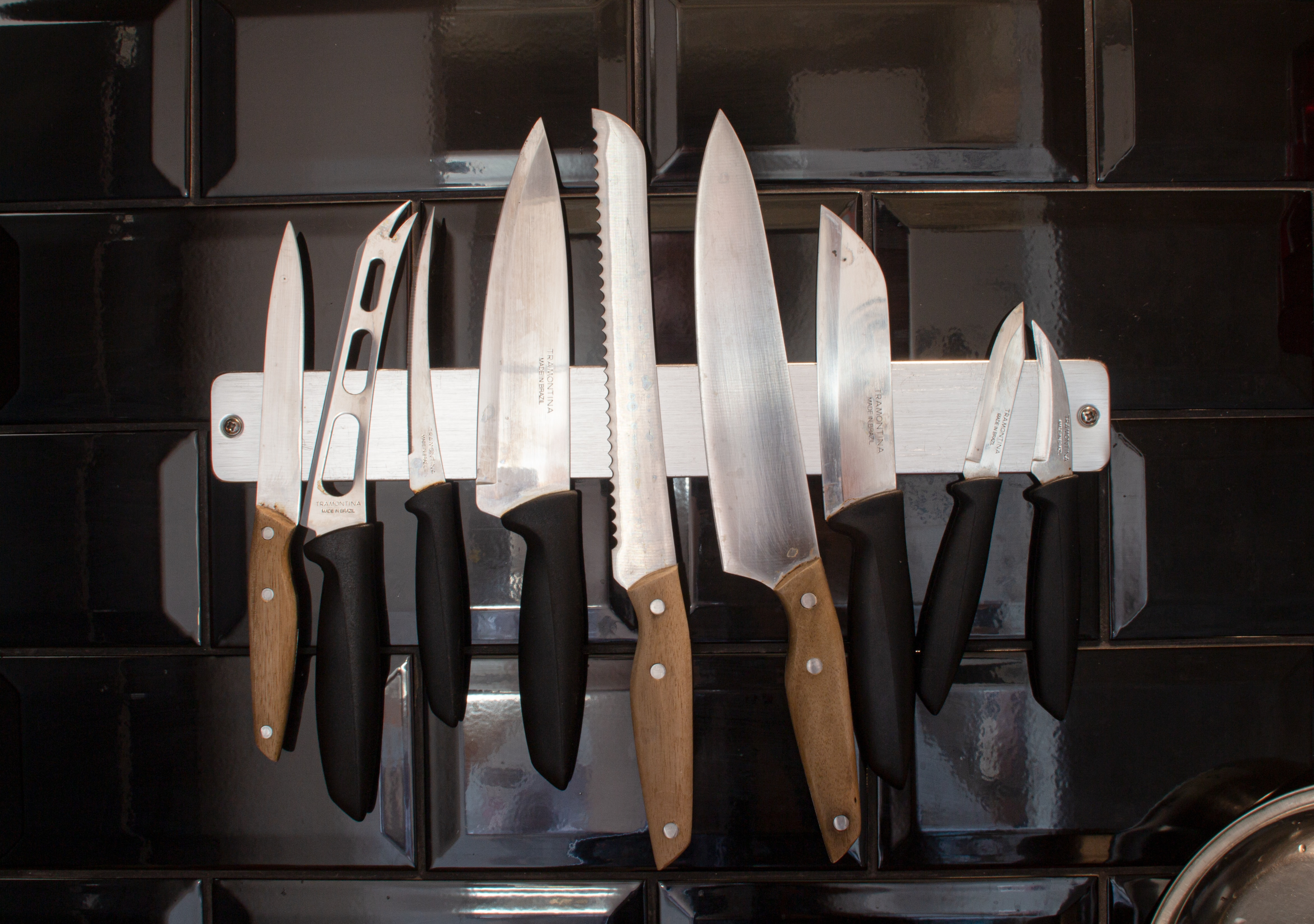
Sparkle and Slide: Cleaning and Lubricating Your Blades
Keeping your precious knife collection clean and sparkling is an important part of knife maintenance. Follow these tips to properly clean your knives:
Clean Your Knife After Every Use
Don’t use your knife multiple times without cleaning it, especially if it’s a kitchen knife. Be sure to clean it carefully after every use so it’s bright and ready for next time.
Wash Your Knife in Soapy Water
You hand wash your knife using a mild soap and hot water. Again, wash immediately after each use to prevent any build-up.
Dry Your Knife Right Away
Be sure to dry your knives after washing, to prevent corrosion.
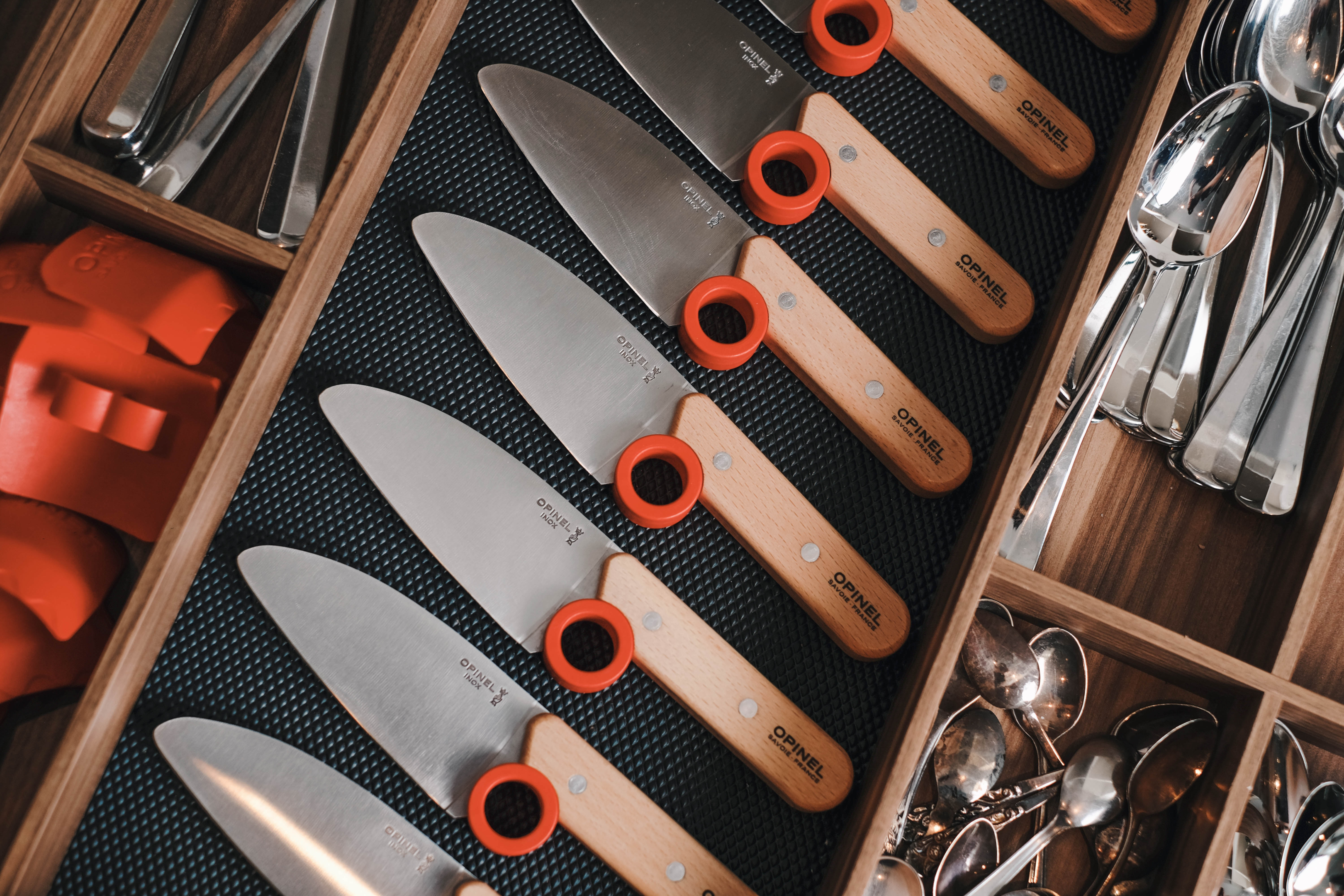
Stay Sharp: Pro Tips for Rust Prevention on Knives
Rust prevention for knives is important! If they are left wet or damp, rust and other types of corrosion can easily wreak havoc. The best way to prevent rust is to dry your knives completely and immediately after washing.
Also, avoid using the dishwasher to clean your knives – even if they belong in the kitchen. The dishwasher can do a lot of damage both to the blade and to the knife handle.

Blade’s Best Friend: Storing Your Knives
A big part of caring for your knives is displaying them correctly! Storing them improperly can cause damage to the knife, and they can chip, break, or become dull. For kitchen knives, use a knife block. You can also find a knife rack, a magnetic strip, or a knife carrying case to keep your treasured knives safe.
Stone Age: Guide to Selecting Sharpening Stones
Sharpening stones come in a variety of types, grades, grits, and shapes. Here is a quick and easy guide to the different stones that are available!
Types of Sharpening Stones
Water stones: These tones work well using water as a lubricant during the sharpening process.
Japanese Sharpening Stones: Considered to be very high quality, these stones have been crafted for hundreds of years from a silica-rich stone. You typically place them in water for up to an hour before using them.
Arkansas Stones: These are mind from novaculite, which is a variety of quartz. They got their name because they are minded in the Ouachita Mountains in Arkansas.
Dry Sharpening Stones: This refers to types of sharpening stone, including those made from ceramic or industrial diamond, that don’t require lubrication.
Oil Stones: Oil stones are natural stones that use oil as a lubricant during use.
Grades of Sharpening Stones
There are five grades of sharpening stones, with coarser stones being use for heavy work like reshaping a damage blade and finer stones being use for light polishing.
- Coarse
- Coarse/Fine
- Medium
- Fine
- Super Fine
Grit Size for Sharpening Stones
Grit size indicates the smoothness of the finish that the stone will produce. The higher the number, the more fine the finish.
- 200: Used for reshaping a damage blade
- 500: Adding a rough edge to a blunt blade
- 1,000: Adding a medium edge with some cutting power
- 4,000: Creating a fine edge
- 8,000: Creating a very fine edge
- 30,000: Adding a smooth, mirror-like finish to your blade
Shapes of Sharpening Stones
Stones for maintaining a sharp knife come in four different shapes, including rectangular, round, square, and triangular.
Square stones are best for small items. Triangular stones are great for fine work, and round stones help to sharpen rounded tools.
FAQ
What are the key steps in maintaining a sharp and rust-free knife?
Clean your knife, keep your knife dry, and hone and sharpen your knife as needed.
How do honing and sharpening differ in knife care?
Honing helps mold the knife back to it’s original shape, while sharpening sharpens a dull blade and removes some of the steel. You can sharpen and hone your knife at home, or opt for a professional tune up.
Which tools are indispensable for comprehensive knife maintenance?
You’ll need a sharpening stone to sharpen a knife, unless you plan on having a professional sharpen your knifes. You’ll also need a honing rod.
Sources
https://www.asweetpeachef.com/cooking-101-proper-knife-care/
https://food52.com/blog/16536-9-knife-care-tips-we-learned-from-a-master-bladesmith
https://www.victorinox.com/us/en/Knife-Care-Tips/cms/knifecaretips
https://uk.rs-online.com/web/content/discovery/ideas-and-advice/sharpening-stones-guide

